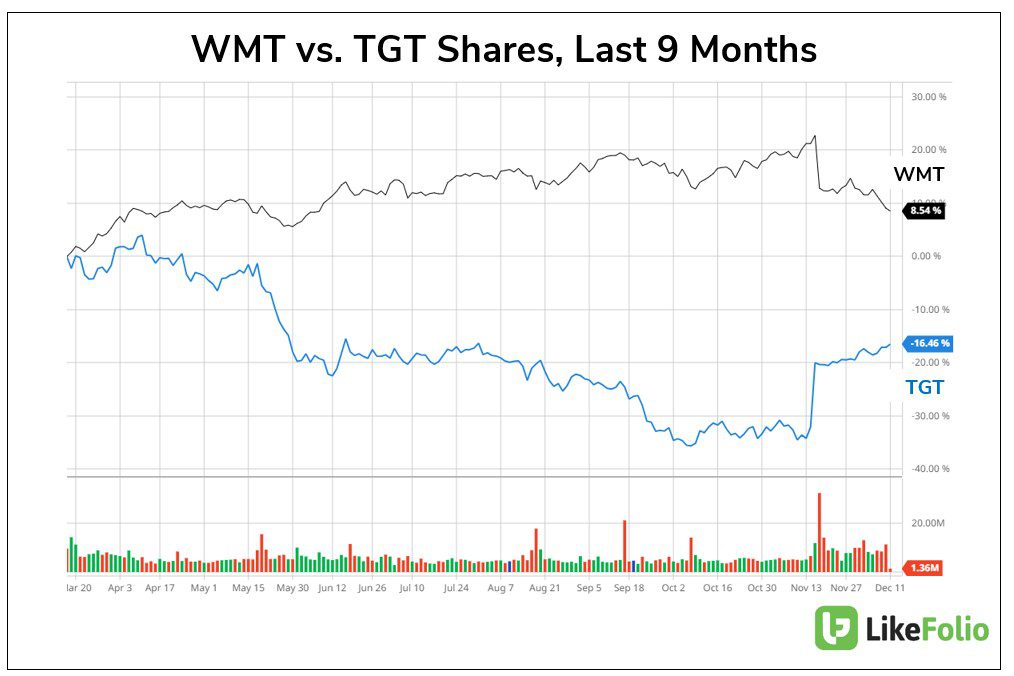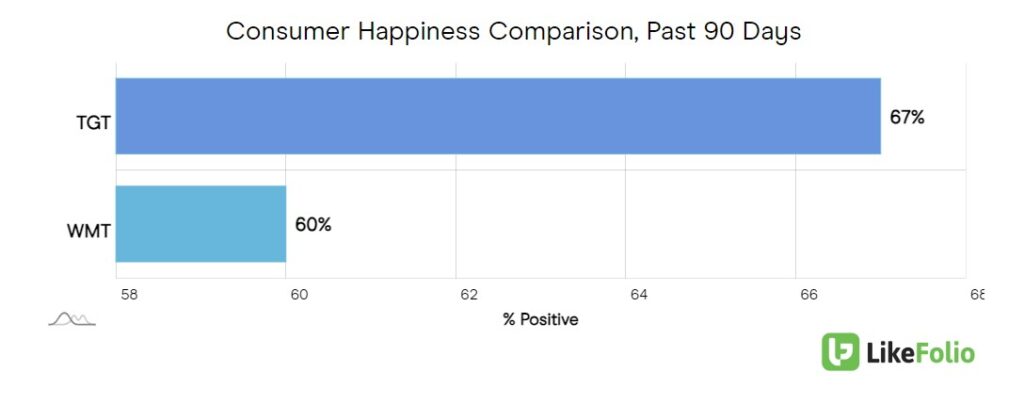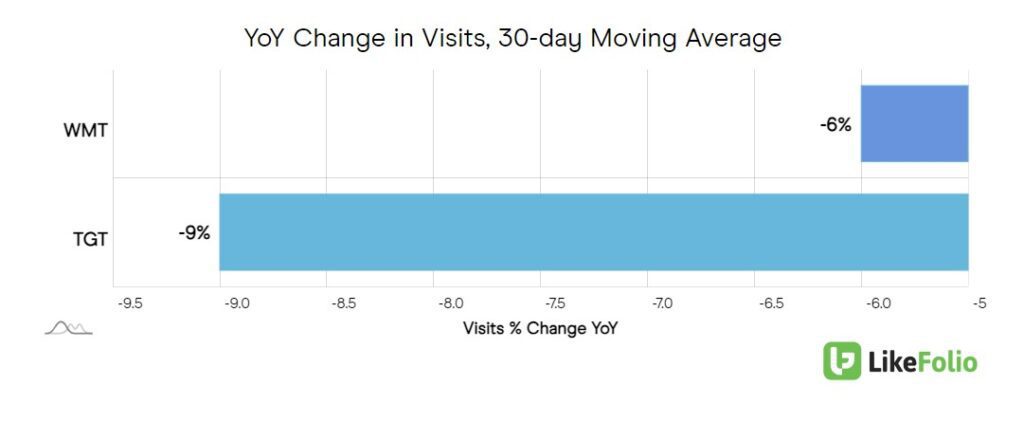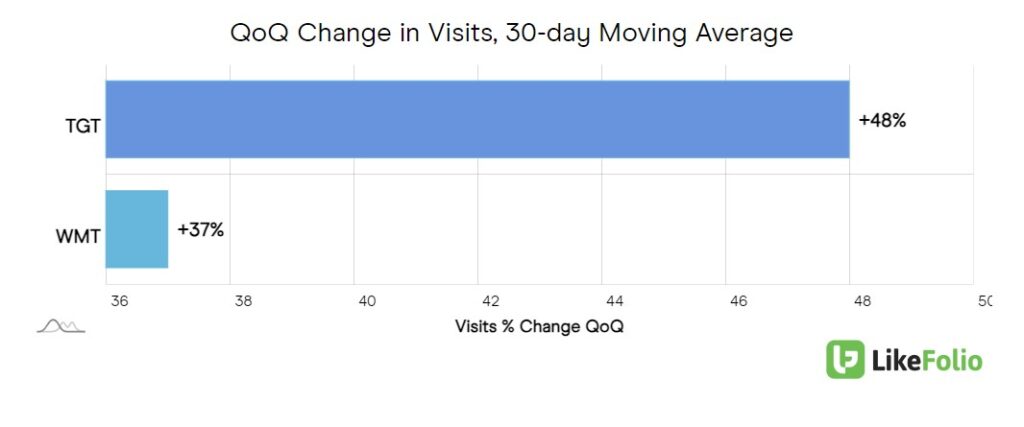Here's what LikeFolio data was showing heading into the Walmart earnings report that sent the stock 10% higher.
Clash of the Big Box Retail Titans: Target vs. Walmart
As the holiday season approaches, the retail landscape is witnessing a notable divergence between two retail giants: Target and Walmart.
Target's recent performance has been a mixed bag. The company's shares surged by 18% following a report that was perceived as "not as horrible as expected." Target reported a drop in total revenue from $26.52 billion to $25.4 billion year over year, and a nearly 5% decline in comparable sales, but stronger-than-expected earnings at $2.10 per share (do they finally have a handle on shrink?!), significantly higher than the anticipated $1.48.
On the other hand, Walmart's shares closed -8% lower, despite a "great but not mind-blowing" report. The retail behemoth exceeded Wall Street's earnings estimates with an adjusted EPS of $1.53, marginally above the expected $1.52, and reported revenue of $160.80 billion, surpassing forecasts. However, a cautious outlook and a slight downward adjustment in its full-year earnings forecast tempered investor enthusiasm. Walmart's strong grocery sales and digital growth couldn't fully offset the impact of these revised expectations.
These moves are creating a more level bar for both companies heading into the holiday season, and bringing their stocks closer to parity.

Walmart's shares have risen approximately 8% over the last nine months, while Target's have declined around 16% in the same period, and both appear on a path of convergence.
So – where do we take things from here?
LikeFolio data suggest both retailers are likely to continue on the path they’re currently on in the near-term, with TGT shares gaining some ground and Walmart leveling lower.
Why do we think this?
A key factor in this retail battle is the emerging trend of deflation. Walmart, with its broader customer base, might feel more pressure from deflation than Target, which traditionally caters to a higher-earning clientele. As general merchandise prices drop, Walmart's sales growth could be challenged, although this shift would be a relief for consumers. Walmart has acknowledged the potential for deflation in the coming months, which could increase unit pressure but ultimately benefit customers.
At LikeFolio, our Happiness metrics indicate that Target is regaining its appeal, with happiness levels 7% higher than Walmart's. Year-over-year comparisons also show Target's customer satisfaction on an upward trajectory, in contrast to Walmart's decline.

Web Metrics reveal a pullback in demand for both companies compared to 2022, with Target experiencing a slightly more severe decline.

However, Target is showing a stronger recovery short-term, with a 48% quarter-over-quarter increase in web visits, compared to Walmart's 37%.

Target's edge in beauty and personal care, bolstered by its partnership with Ulta, may help to attract consumers willing to spend more on high-demand items.
In conclusion, the market's current assessment of both companies seems accurate.
Target appears poised for a near-term rise, while Walmart is likely to stabilize at a lower level. We’ll continue to monitor as the shopping season reaches its peak – and members will be the first to know if we see a shift in consumer behavior.
